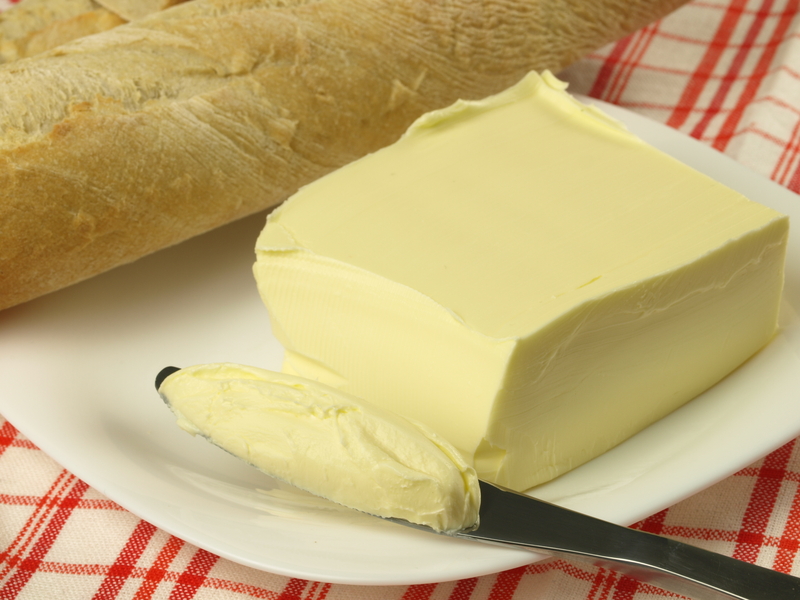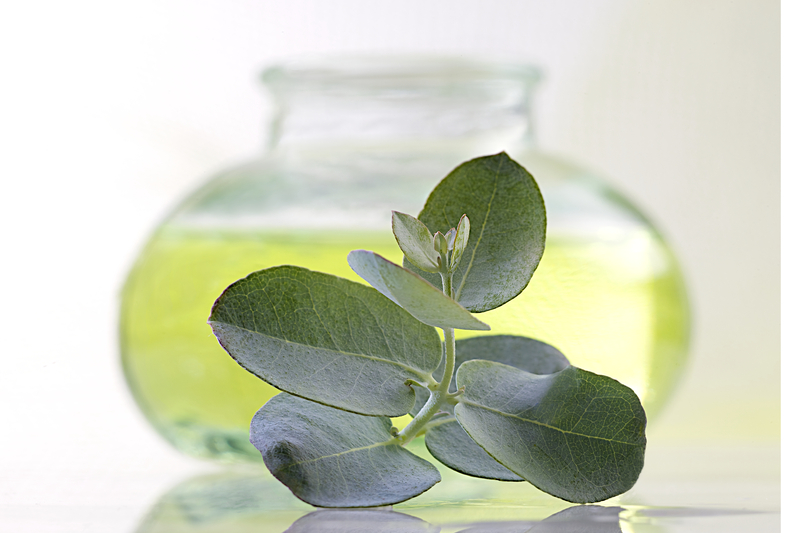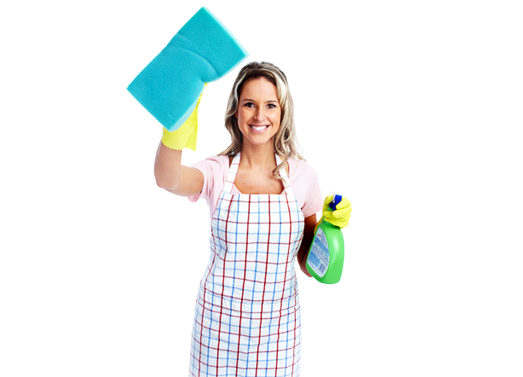Say Goodbye to Burnt-on Residue With These Stovetop Cleaning Tips
Posted on 21/08/2025
Say Goodbye to Burnt-on Residue With These Stovetop Cleaning Tips
Every home chef knows the struggle: after whipping up a delicious meal, your stovetop is left covered in a layer of stubborn, burnt-on residue. But don't worry! With these stovetop cleaning tips, you'll say goodbye to burnt-on residue and get your kitchen shining in no time. From natural solutions to clever hacks, this comprehensive guide offers everything you need to tackle even the toughest caked-on messes.
Understanding Burnt-on Residue: What Causes Stovetop Messes?
Before diving into proven stovetop cleaning methods, let's take a closer look at why burnt-on stains happen. Whether you have a gas, electric, or glass stovetop, spills and splatters from boiling, frying, and simmering are common culprits. When these messes aren't cleaned promptly, they bake onto the surface from repeated heat exposure, creating that hard, blackened gunk every cook dreads.
- Food spills: Sauces, oils, and starchy foods boil over and settle.
- Sugar and dairy: These are notoriously sticky and tough to remove.
- Grease splatters: Frying meats or veggies often sends grease flying far and wide.
- Neglect: Forgetting to clean messes immediately leads to baked-on residue.
Understanding these common causes can help you prevent stubborn build-up, but when the mess has already happened, you need effective stovetop stain removal solutions.

Essential Supplies for Stovetop Cleaning
Before starting your deep cleaning session, gather these essential supplies. You don't need fancy equipment--just reliable, everyday items will do the trick:
- Baking soda and white vinegar
- Non-abrasive scrubbing pads or sponges
- Microfiber or soft cloths
- Warm water
- Dish soap
- Razor blade scraper (for glass stovetops, used carefully!)
- Old toothbrush
- Optional: commercial stovetop cleaner for stubborn cases
- Spray bottle
- Paper towels
Now you're ready to conquer burnt-on residue with these go-to stovetop cleaning techniques!
How to Clean Burnt-on Residue From Different Types of Stovetops
1. How to Clean Gas Stove Burners and Grates
Burnt-on grime on gas burners and grates is especially challenging due to the irregular shapes and heavy-duty material. Here's how to tackle them:
- Remove burner grates and caps: Wait for the stove to cool completely before removing all removable parts.
- Soak in hot, soapy water: Place grates and burner caps in your sink with hot water and a few drops of dish soap. Let them soak for 15-30 minutes.
- Scrub stubborn spots: Use a non-abrasive scrub pad or old toothbrush to lift away burnt-on spots. For extra-tough stains, make a paste of baking soda and water and apply it to the residue.
- Rinse and dry thoroughly: After scrubbing, rinse everything well and let it air dry before reassembling your stove.
Tip: For super stubborn, burnt-on residue, leave the baking soda paste on for 15 minutes before scrubbing.
2. Cleaning Electric Coil Stovetops
Electric stoves need care to avoid damaging electrical components. To clean coils and drip pans:
- Unplug the heating coils: After the stove cools, unplug and carefully remove the coils.
- Wipe coils: Never submerge electric coils in water. Wipe gently with a damp sponge and a bit of dish soap.
- Clean drip pans: Remove under-coil drip pans, soak in hot soapy water, and scrub away residue.
- Treat stubborn stains: Again, you can use a baking soda paste for overnight treatment if needed.
- Dry and reassemble: Make sure all parts are completely dry before putting them back.
Pro tip: If your drip pans have blackened, burnt-on residue, a mixture of baking soda, vinegar, and a scrub should restore their shine.
3. Glass and Ceramic Stovetop Cleaning Tips
Glass and ceramic stovetops look sleek but show every smudge. To remove burnt-on stains from a glass cooktop:
- Sprinkle baking soda: Over the cooled burnt areas, sprinkle a generous layer of baking soda.
- Add white vinegar: Pour or spray white vinegar over the baking soda. Allow the fizz to break up residue for 10-15 minutes.
- Wipe and scrub: Use a soft, damp sponge or microfiber cloth to gently lift the loosened grime. For stuck spots, use a razor blade scraper held almost flat (at a 45-degree angle).
- Rinse and polish: Remove any remaining solution with a clean, damp cloth and polish with a dry microfiber.
Never use steel wool or abrasive scouring pads on glass or ceramic stoves, as they can scratch and dull the surface permanently!
Natural Stovetop Cleaning Solutions: Eco-Friendly and Effective
If you prefer green cleaning, nature has plenty to offer in the fight against burnt-on stovetop residue. These eco-friendly stovetop cleaning solutions work wonders:
- Lemon juice and baking soda: Lemon acts as a natural degreaser while baking soda scrubs away stains.
- White vinegar: Its mild acid dissolves burnt-on food and brightens surfaces.
- Salt: Coarse salt, combined with vinegar or lemon, acts as a gentle abrasive for tough spots.
- Steam: Place a pot of water on the stove, boil to create steam, then easily wipe away loosened residue.
For a quick, natural clean, simply sprinkle baking soda on stains, spray with vinegar or lemon juice, let it fizz, and wipe away. This method is safe for most stovetops and reduces the need for harsh chemicals.
How To Remove Really Stubborn Burnt-on Residue
Sometimes, no matter how hard you scrub, some stains refuse to budge. In these cases, try these advanced techniques:
Baking Soda Soak
- Mix baking soda with a small amount of water to form a thick paste.
- Apply liberally over burnt-on areas and cover with a damp, warm towel.
- Let sit for several hours or overnight, then scrub and rinse.
Razor Blade or Scraper
- For glass stoves, gently slide a clean, sharp razor blade under the edge of baked-on residue at a flat angle.
- Never use this trick on metal or coil surfaces to avoid deep scratches.
Commercial Stovetop Cleaners
- If natural solutions don't work, specialized stovetop cleaners like Bar Keepers Friend or Cerama Bryte can be highly effective.
- Always follow manufacturer instructions and test on a small area first.
Remember: Patience and gentle pressure are your best tools. Avoid using excessive force, which can cause damage.
Daily & Weekly Stove Maintenance: Prevent Burnt-on Build-up
The secret to a spotless stovetop isn't just knowing how to clean burnt-on grime--it's preventing it in the first place! Add these habits to your kitchen routine:
- Wipe up spills immediately after cooking. A quick swipe can prevent a burnt-on mess later.
- Clean stove grates and burners weekly--don't wait for stains to accumulate.
- Use splatter guards when frying to minimize grease build-up.
- Deep clean monthly for best results, even if your stove looks clean.
- Check under burners and around knobs where gunk collects unnoticed.
Consistent maintenance will keep your stove looking and functioning like new.
Extra Stovetop Cleaning Tips and Tricks
- Always let burners cool completely before cleaning to avoid burns.
- Use microfiber cloths for a streak-free, polished finish.
- If odors linger, boil a mix of water and lemon slices on the stove to naturally freshen the air and lift minor stains.
- Check your manufacturer's manual for any specific cleaning recommendations or warnings.
- Avoid ammonia-based cleaners on enamel or painted surfaces to maintain their finish.
- For removable stove parts, run them through the dishwasher if they are dishwasher safe.
Stovetop Cleaning Mistakes to Avoid
Too often, well-meaning home cooks accidentally damage their appliances. Protect your investment by avoiding these common cleaning mistakes:
- Using abrasive pads on glass or ceramic surfaces.
- Applying harsh chemicals that can pit or discolor enamel.
- Failing to dry parts thoroughly, which can lead to rust or electrical issues.
- Letting food bake onto surfaces repeatedly, making future cleaning even harder.
- Using too much water around electric components.

Frequently Asked Questions About Stovetop Cleaning
Can I use steel wool on my stovetop?
No. Steel wool can scratch glass, ceramic, and even some enameled metal stove surfaces. Use only non-abrasive sponges or dedicated scrubbing pads labeled as "safe for stove tops."
What is the fastest way to clean a burnt-on mess?
The quickest method is to apply baking soda and vinegar, let it fizz for a few minutes, then gently scrub with a soft pad. Cleaning right after cooking (once the stove is cool!) makes removal even easier.
How often should I deep clean my stovetop?
For light users, deep clean once a month. If you cook daily or make a lot of fried or saucy dishes, aim for at least every two weeks.
Conclusion: Enjoy a Spotless, Residue-Free Stove
Say goodbye to burnt-on residue for good by following these expert stovetop cleaning tips and tricks. Whether you prefer natural ingredients or commercial cleaners, routine maintenance combined with the right scrubbing techniques ensures your stove stays shiny, clean, and ready for your next recipe. For even more peace of mind, develop the habit of immediate spill clean-up, weekly checks, and monthly deep cleaning--your kitchen (and dinner guests) will thank you!
Ready to put these stovetop cleaning tricks into action? Start today and enjoy the satisfaction of a gleaming, like-new stove every time you cook!
Share your favorite stovetop cleaning hack in the comments below and help fellow home cooks say goodbye to burnt-on messes!




